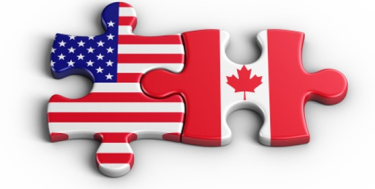Why Consider Canada? Part 3: Packaging 9/30/2016
In my past two articles on doing business with Canadian retailers, we discussed the overall Canadian retail landscape and how to navigate retailer relationships. In this column, we’ll cover packaging essentials for products developed for the Canadian market.
If you’ve visited some Canadian retailers (and if you’re a supplier looking to business in Canada I highly recommend doing this), you'll see that U.S. labeling will not work there.
First of all, by law, the label must be bilingual, with all of the information in both French and English. The province of Quebec represents about a quarter of the population and the official language is French – and there are many pockets of French speakers across the country.
In addition, U.S. manufacturers who want to do business in Canada must register with the Canadian Food Inspection Agency, which is a regulatory agency that is dedicated to the safeguarding of food, animals, and plants, which enhances the health and well-being of Canada's people, environment and economy. This is a similar process to registering with the FDA.
On top of this, Canada uses the metric system, so your nutritional information must be in grams or liters (not ounces or pounds), and – as with the other information -- must include French and English.
Lost in Translation
Just as important as understanding the regulatory requirements, is understanding the Canadian market and culture, particularly if you are trying to impress a Canadian buyer. The subtleties of language must be taken into account – not just with French, but also with the various terms and expressions among English-speaking Canadians, as well. Even the familiar name of a product in the US can be different in Canada; ‘Smarties’ candies are chocolate in Canada, not those compressed little chalky disks we call Smarties in the US. Ever heard of a Joe Louis or a May West? These are iconic snack cakes in Quebec.
According to Ann-Marie Gélinas of Verbatout, a Quebec-based provider of copy writing and translation services for the CPG industry. Finding the right phrase can be tricky, as expressions don’t translate word for word between English and French.
“You have to take in consideration that in Canada, there are the two markets to consider – both with distinct cultures, history, preferences and trends – all of which are very different from the US,” she says. “A biscuit in the US and English Canada is totally different than a biscuit in Quebec. For French Canadians, a biscuit is a cookie, nothing like the baked good that is similar to a roll that you would serve with dinner in the U.S. So going for the literal translation, without an in-depth understanding of both spectrums of the Canadian culture, can lead to a costly faux pas.”
This means steering clear of online translation services like Google Translate. “Online translating services translate word for word, so be careful here,” says Colleen McLaughlin, owner of McLaughlin Creative Communications, based in Niagara Falls, Ontario, which provides service for businesses looking to enter the Canadian market, including package design and compliance consulting for content, claims and nutrition labeling. “A nut you eat is different from an industrial nut, also ‘manufactured’ has a far more industrial meaning in Quebec French than in English. Creating labeling for the Canadian market can be a costly investment. Packaging is expensive, so you want to do it right the first time.
"And while the Canadian Government might not have the time or personnel to peruse the aisles to check if labels are correct, your competition is checking -- and they may complain to the CFIA," adds McLaughlin.
So if you are planning on entering the Canadian market, register with the CFIA and learn about the regulations regarding exporting your products to Canada, and use the services of the right professionals to be sure you are compliant. Most of all, make sure your products, branding and packaging are appealing to both the English Canada and French Canadian markets.
Stay tuned for Part 4: Distribution -- Getting Your Products Across the Border”

